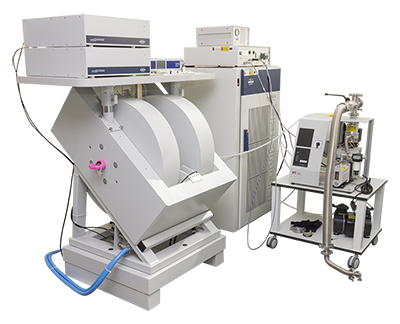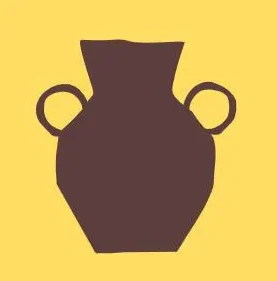One of the most important clues archaeologists use to understand how people lived in the past is the age of a site or its artifacts. But how do so when there are no obvious indications of their age?
Dating (not that kind of dating!) and its Importance
Dating it the use of various methods to discover the age of an artifact or site. Dating is crucial for understanding the timeline of human history and cultural development. By determining the age of artifacts and sites, archaeologists can reconstruct past events, understand cultural changes over time, and establish connections between different societies and time periods.
Relative vs. Absolute Dating
In archaeology, two main types of dating are used: relative dating and absolute dating.
Relative dating determines age by comparing it and analyzing relationships with other context clues. For instance, based on the knowledge that deeper soil layers are older than layers closer to the surface, archaeologists know the artifacts found in deeper layers will also be older relative to artifacts found at a more shallow layer. Relative dating can give an approximated, quick estimation of artifact or site age.
In contrast, absolute dating gives a more specified age, but often involves more complex, time-consuming methods. To do so, in-depth analysis of the physical and chemical properties of an artifact or site are often used. Accuracy and specificity will depend on the method used and the type of material being dated.
Relative Dating Methods
- Stratigraphy: The study of layered soil deposits based on the Law of Superposition which states that, if undisturbed, older soil layers will settle at the bottom and younger soil layers will be overlaid on top. Using this, archaeologists can build a timeline where artifacts discovered nearest to the surface are youngest, and those discovered at the bottom are oldest. They can also assume that artifacts found in their layers are at least as old as their respective deposits.

- Seriation: A technique that looks at artifacts stylistic choices of an artifact in a specific culture, and then places them in a timeline based on the evolution of popular styles at the time. This method assumes that certain styles will fade and another style will slowly become more popular.

- Typology: When artifacts are classified in groups of similar styles, shapes, or materials, which then makes it easier to seriate groups of artifacts and establish a chronological order of the creation of these different groups.
- Fluorine Dating: When bones are buried in soil, the bones will absorb fluorine in the groundwater, with the amount of fluorine present in the bones increasing over time. Although the amount of fluorine absorbed can vary based on soil and environmental conditions, this technique can be used to compare fluorine levels in bones at the same site or region and place them in a chronological order.
Absolute Dating Methods
- Radiocarbon Dating: This method works by measuring carbon-14, a naturally occurring isotope of the element carbon, in artifacts made of natural materials. When a living organism dies, the amount of carbon-14 inside it will be fixed since the organism no longer respirates or consumes plants/animals containing carbon, but the remaining carbon will naturally undergo radiocarbon decay. Based on the amount of carbon-14 remaining, archaeologists can estimate the age of the material and the artifact. In general, the older an artifact is, the more the carbon-14 will experience radioactive decay and the less carbon-14 will remain.
- Dendrochronology: Most trees produce new rings of bark annually, meaning archaeologists can use this information to estimate the age of a tree, or even wood artifacts, and can therefore gather more information about the age of the site as a whole. Although this method is extremely precise, it only functions in sites that contain a high density of wood samples.
- Thermoluminescence Dating: Thermoluminescence can be useful when dating artifacts that contain crystalline structures such as pottery or sediment. These crystalline minerals absorb radiation from their environment and sometimes trap electrons from the sunlight within their structures. When a sample of the artifact is heated to extremely high temperatures, trapped electrons will be released in the form of light. The intensity of the emitted light is proportional to the amount of time the sample has been exposed to radiation since it was last heated or exposed to sunlight. By measuring an object’s thermoluminescence, archaeologists can estimate the amount of time that has passed since its last heating event.
:max_bytes(150000):strip_icc():format(webp)/Thermolumine-5b80748546e0fb0025a490d7.png)
- Electron Spin Resonance: Minerals such as tooth enamel and quartz can trap electrons within their crystalline structures when exposed to radiation in their surroundings. Electron Spin Resonance (ESR), measures the number of those trapped electrons, quantifying total radiation dose an object has received over its lifetime. The age of the object can then be calculated by dividing total radiation dose by its dose rate (found through analyzing the surrounding environment and material’s composition).

- Potassium-Argon Dating: Also known as K-Ar dating, this method is similar to the radiocarbon dating previously mentioned. In some rocks and minerals, usually volcanic ones, the radioactive isotope potassium-40 will decay into the stable isotope argon-40 over time. By measuring the ratio of potassium to argon in an artifact, archaeologists can determine how long it has been since that particular rock or mineral had solidified, since argon only becomes trapped in an object in its solid form.

As technology continues to advance and new dating methods develop, archaeologists will hopefully be able to more accurately estimate the age of artifacts, and therefore expand their understanding of the cultures of the past.
Works Cited
-
North Carolina Department of Natural and Cultural Resources. (2021, April 14). Relative and absolute dating in archaeology. Retrieved August 5, 2025, from https://archaeology.ncdcr.gov/blog/20210414/relativeabsolutedating
-
Wikipedia contributors. (n.d.). Seriation (archaeology). In Wikipedia, The Free Encyclopedia. Retrieved August 5, 2025, from https://en.wikipedia.org/wiki/Seriation_(archaeology)
-
Radiocarbon. (n.d.). Radiocarbon dating in archaeology. Retrieved August 5, 2025, from https://www.radiocarbon.com/archaeology.htm
-
Clive. (2019). Studies in luminescence dating (cosmic ray and OSL methods) [Website page]. ThoughtCo. Retrieved August 5, 2025, from https://www.thoughtco.com/luminescence-dating-cosmic-method-171538
-
Aitken, M. J. (1983). Optically stimulated luminescence dating: Progress in archaeological chronology. Journal of Archaeological Science, 10(4), 293–317. https://doi.org/10.1016/0277-3791(83)90006-9
-
Vedantu. (n.d.). Potassium–argon dating: Definition & method. Retrieved August 5, 2025, from https://www.vedantu.com/chemistry/potassium-argon-dating

